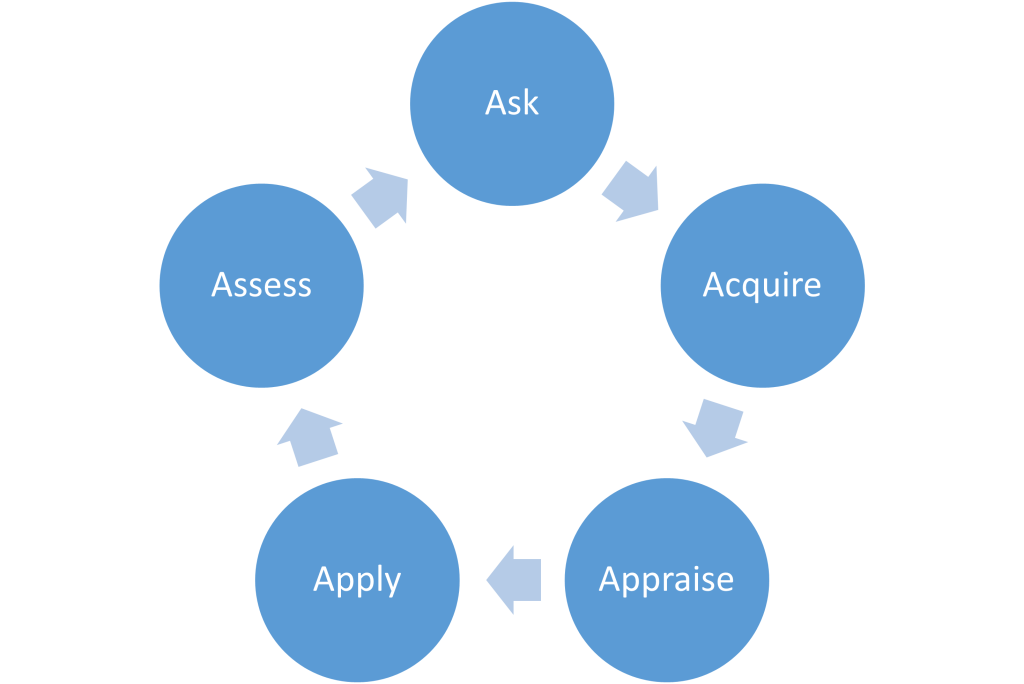Assessing the Evidence
By now, you have developed a clinical question, sought out research to answer your question, critically assessed that research and applied the findings to your patient or population. The process does not end here though. Evidence-based practice is iterative, meaning that it builds on itself, constantly being reshaped by new evidence and the clinical expertise of those who practice it.

The steps of evidence-based practice can be illustrated by a continuous evidence cycle. Once you have applied your evidence to your situation, you should evaluate how well it worked. This process often generates new clinical questions, prompting you to begin the cycle again.
Ask yourself the following questions:
- What questions do you still have, and what new questions have arisen?
- What assessments should you use to gather evidence?
- Was the diagnosis or treatment successful?
- Is there new evidence on this topic?
- What was the patient’s or community’s response or attitude?
- What new information would help you make a better decision next time?

